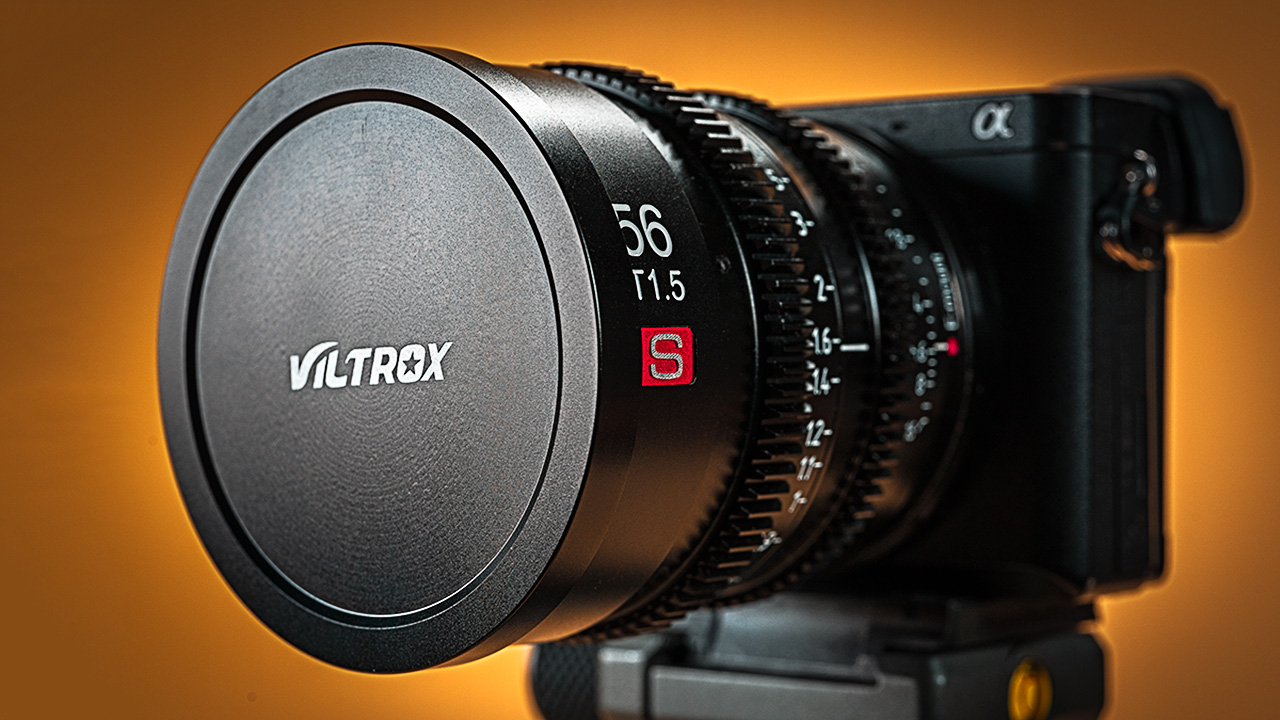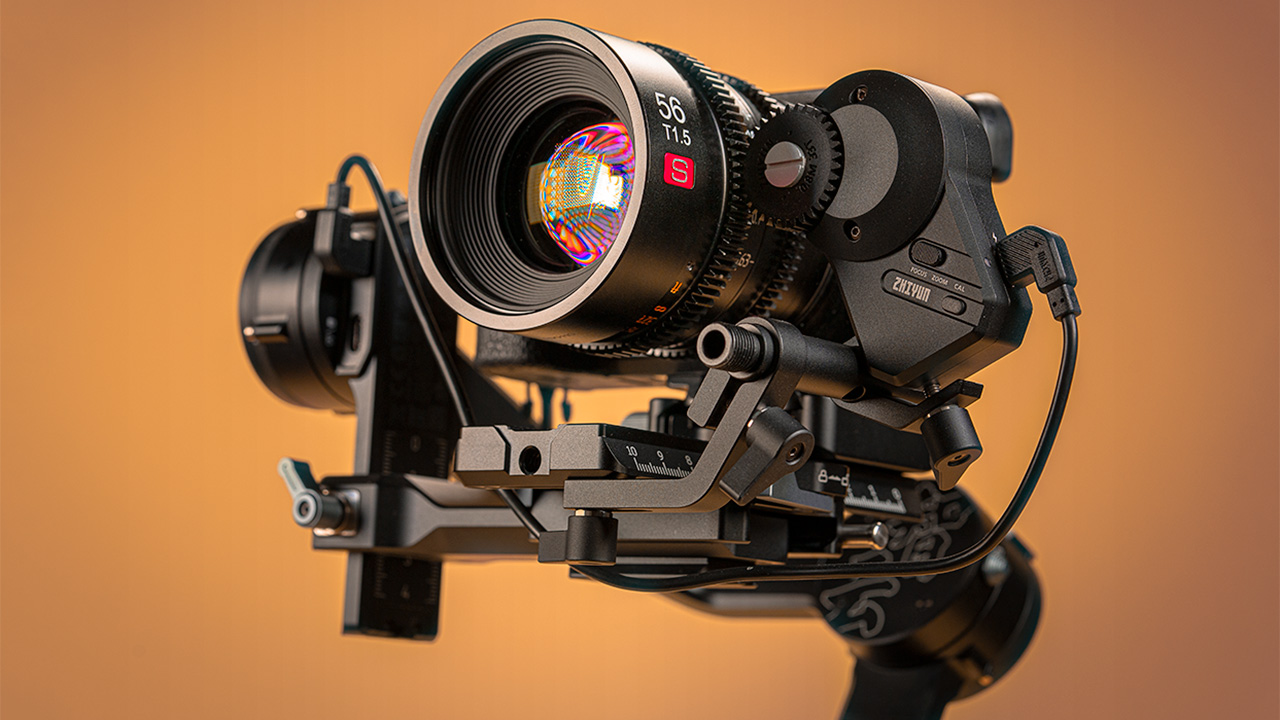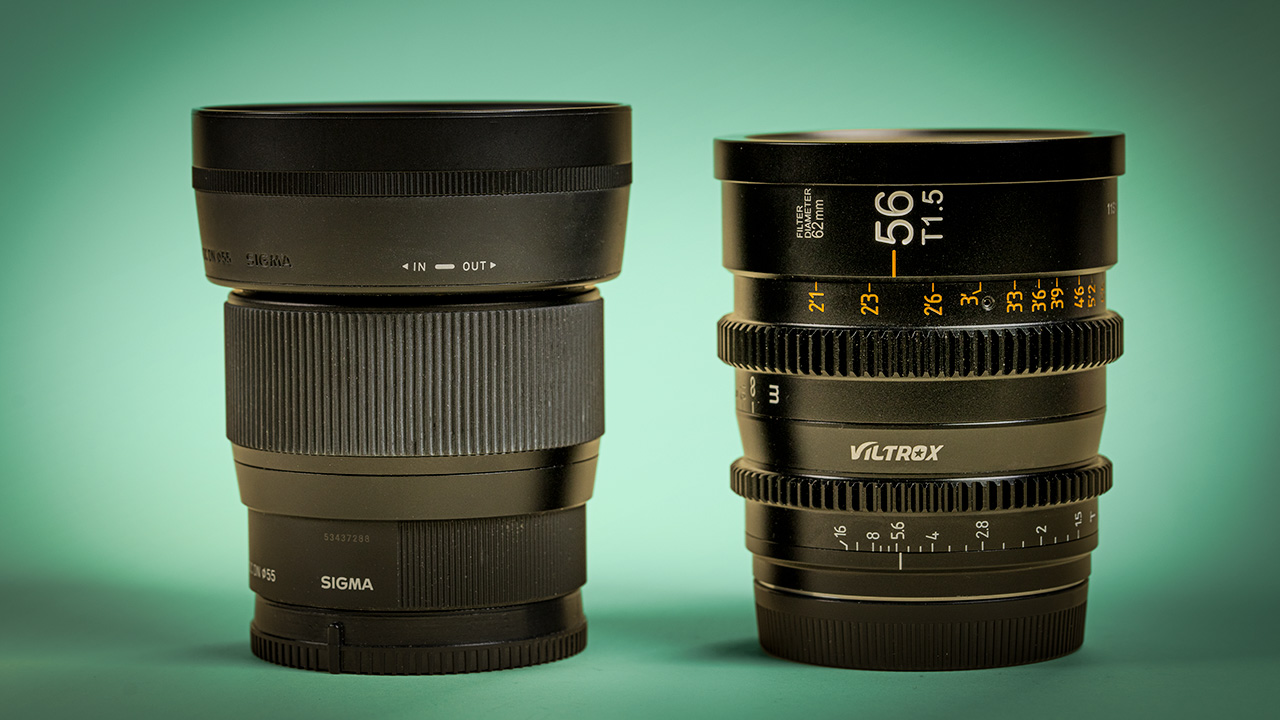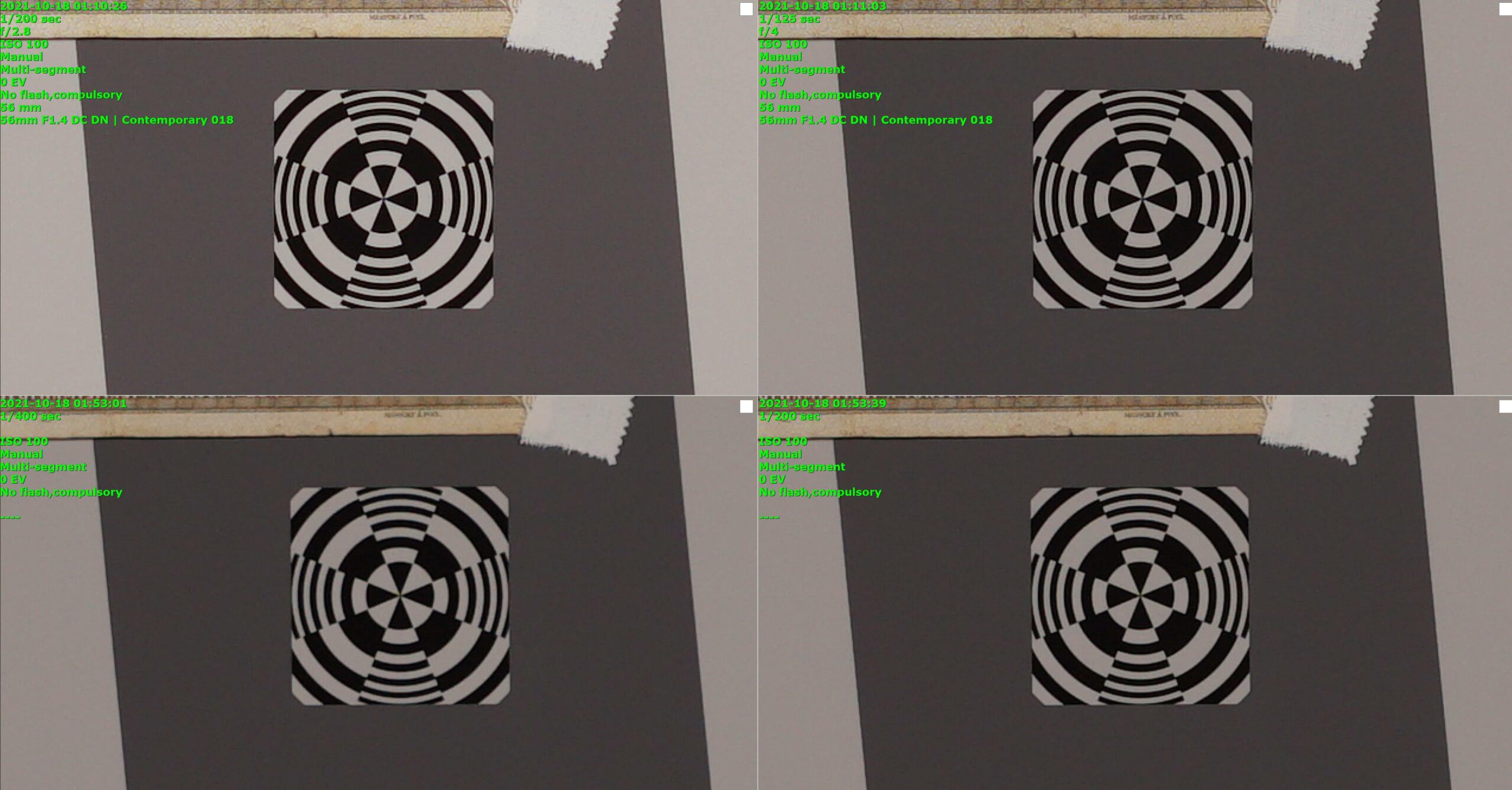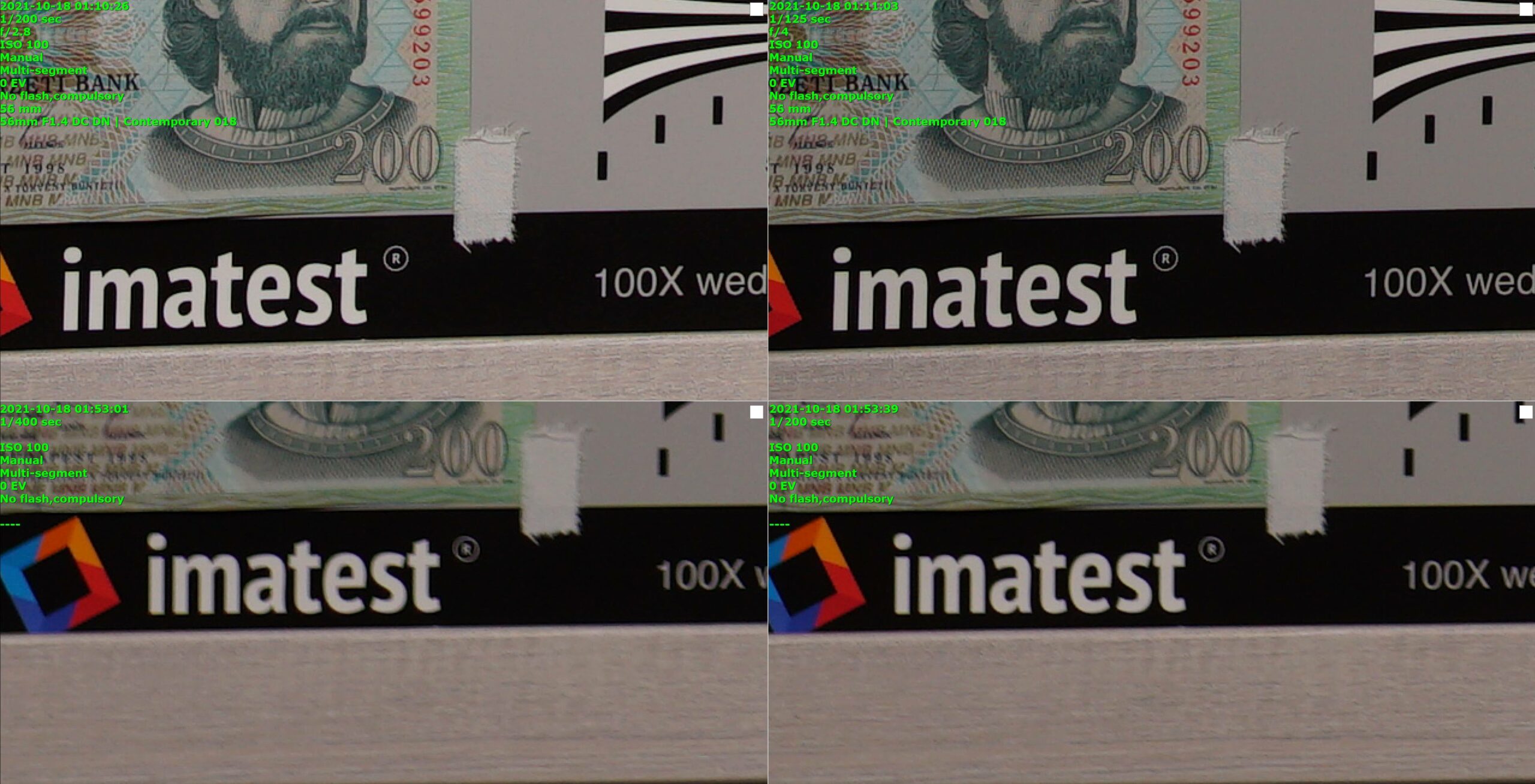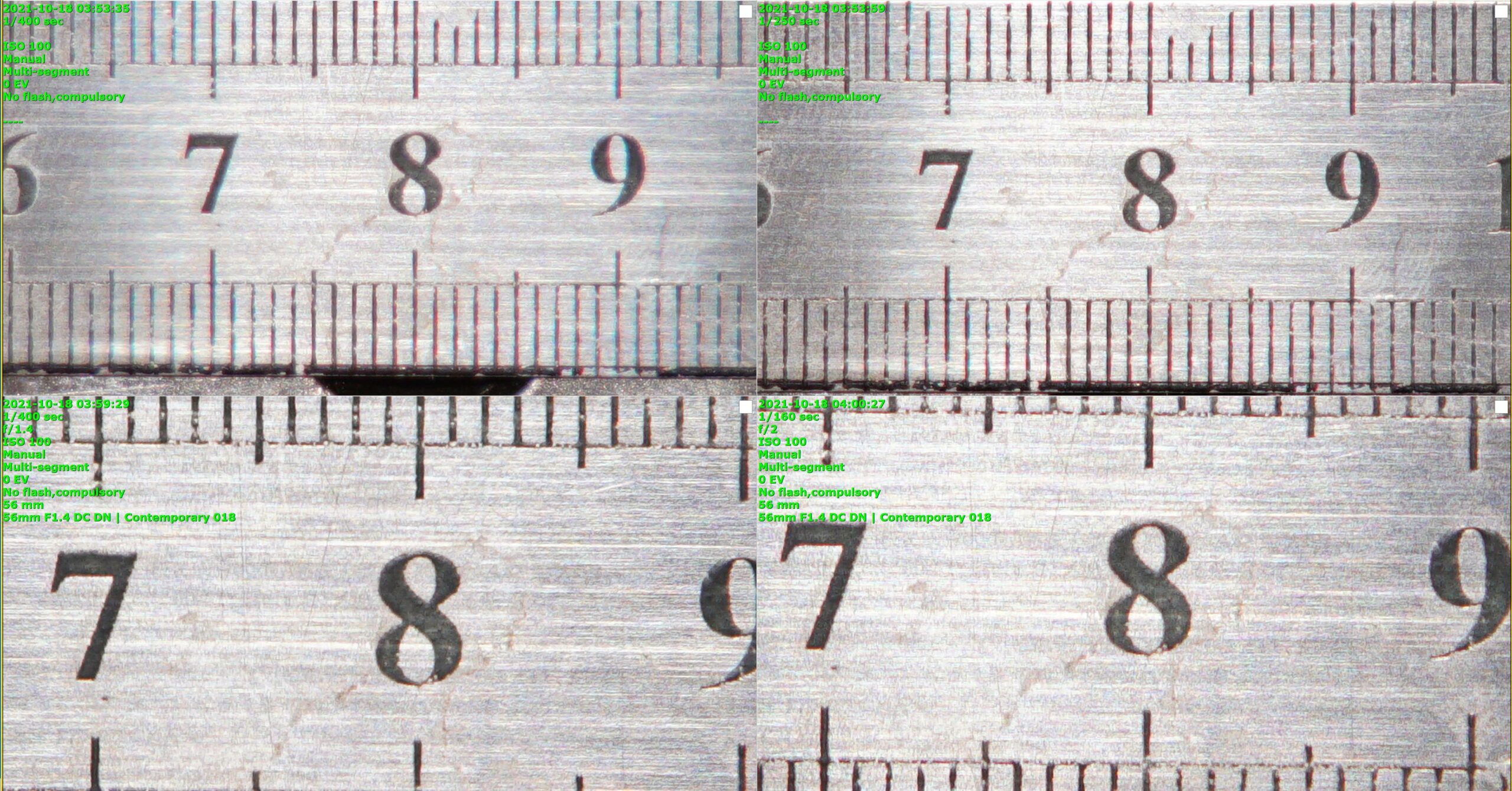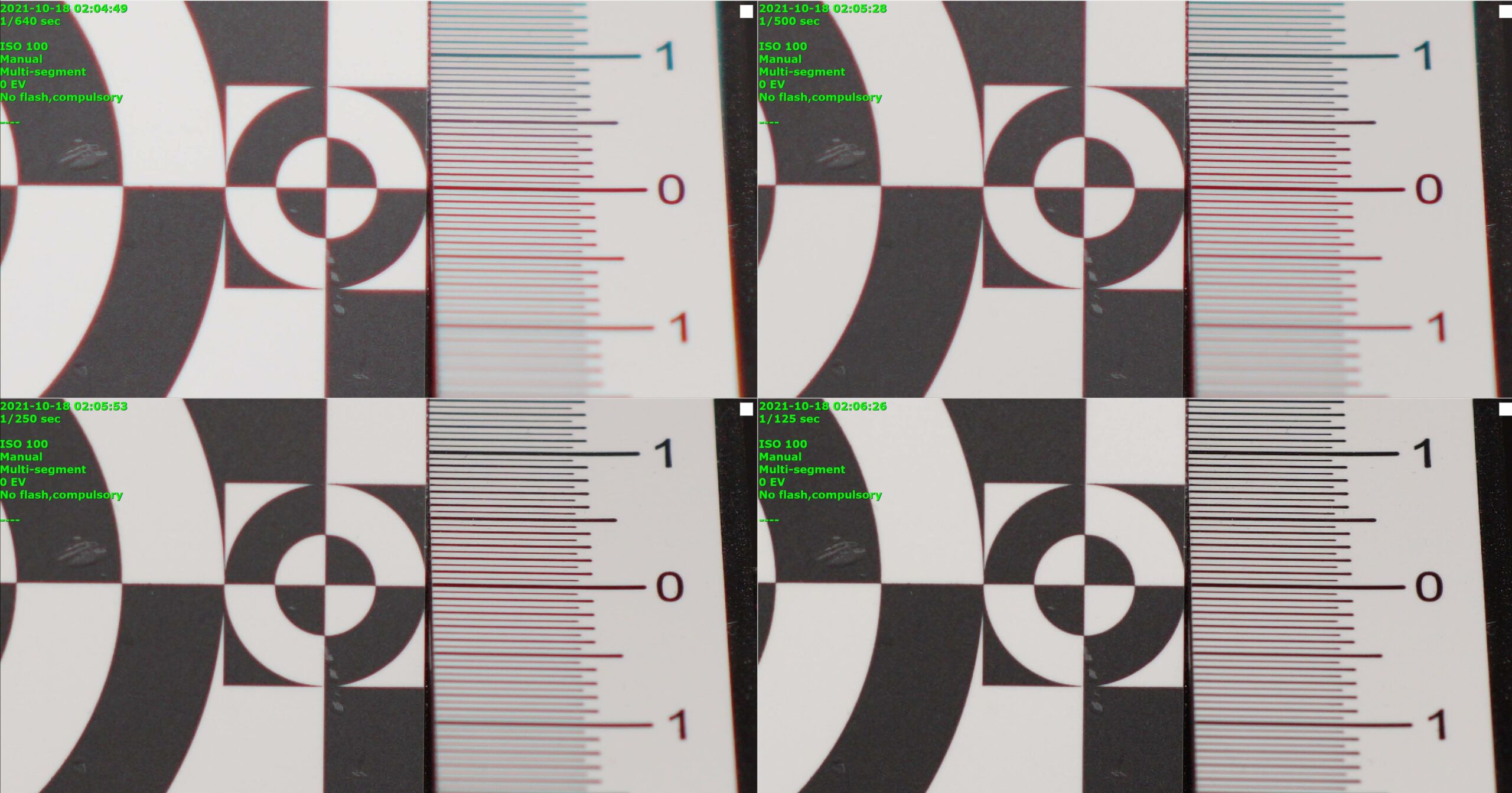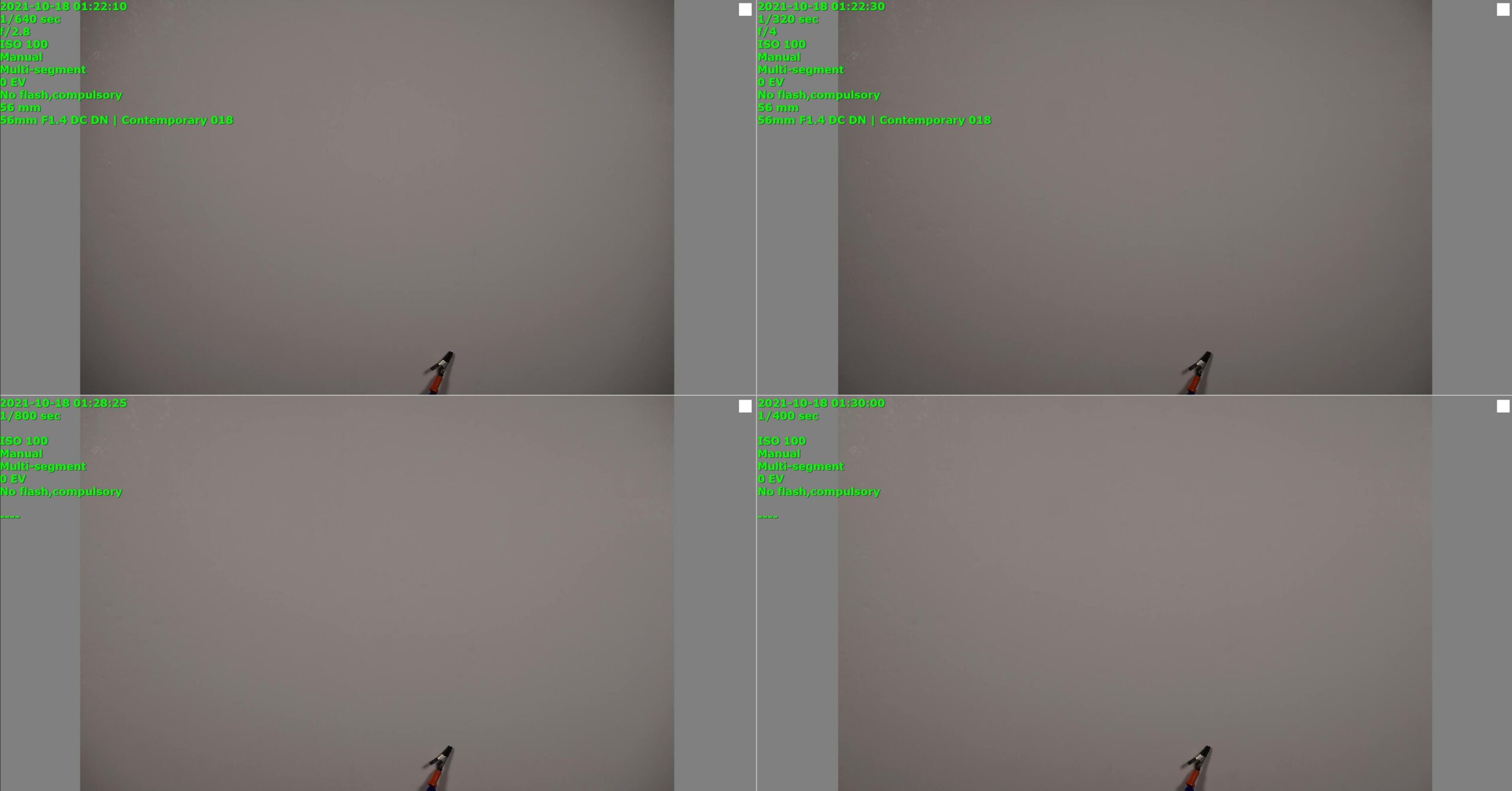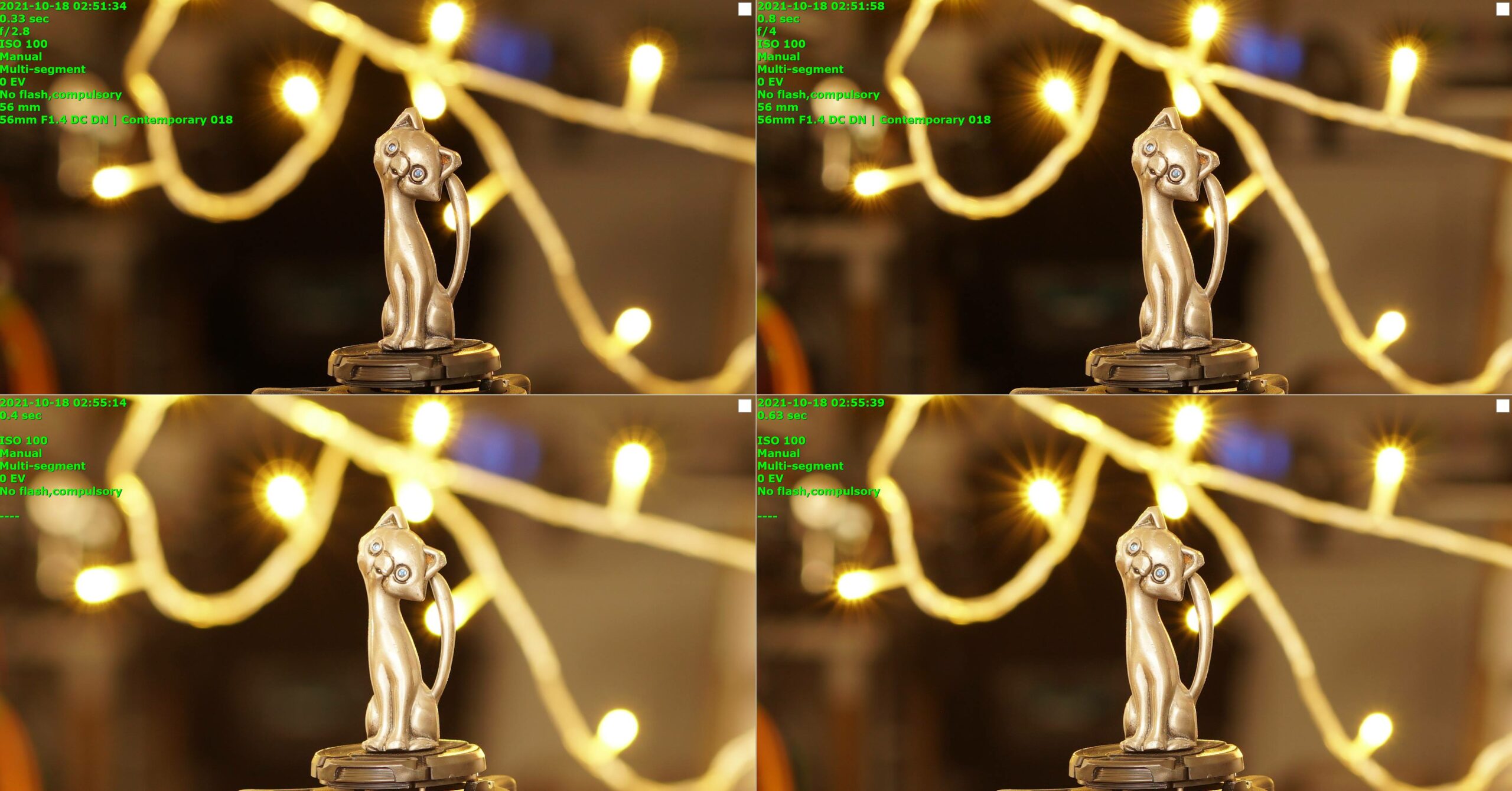Today we will be testing our first APS-C Cine lens, the Viltrox 56mm T1.5, part of a new compact video-oriented line of lenses by the company.
Viltrox has been expanding its line of lenses in recent years coming up with more focal lengths, mounts, and a range of AF lenses including some new FF ones like the 24mm f/1.8 AF lens at very affordable price tags.
The lens that we shall be looking at today is part of another new series which includes 2 other prime lenses – the 23mm and the 33mm all with T1.5 apertures and supposedly similar in optical design to the company’s equivalent stills lenses which have been on the market for some time now.
The Viltrox 56mm T1.5 on the A6500
Build and design
Optical Design
The lens has a fairly simple optical design with 10 elements in 9 groups including one ED and one high refractive element and multi-layer nano-coating.
The lens officially covers an APS-C sensor with a 28.4 mm image circle but we decided to see what will happen if we will put it on the full-frame sensor of our A1 and surprisingly the vignette was not that bad and if you are willing to use clear image zoom just a little (1.1x-1.2x) you can remove it almost completely, making it a very interesting compact fast FF Cine lens.
Materials
The lens is fully metal and feels very well built, Viltrox mentions that it includes brass components.
Size and weight
The lens isn’t very big at a tad over 8cm long (3.1”) but it does have a bit of weight to it compared to its size at just over 540g/19oz (about twice the weight of the stills version).
Rings
The lens has two rings, a front focus ring and a back (closer to the mount) smooth aperture ring.
Both rings have 0.8 gear rings (identical for this entire line in size and position and so is the size front diameter of 70mm) and the focus ring has a focus throw of close to 180 degrees.
Both rings seem to have very good resistance and feel very nice to use. Viltrox added an extra touch with distance markings on both sides in meters and ft as well as aperture markings next to the aperture ring on both sides. The only thing we didn’t like on both of these is that the markings are on the sides and not the top of the lens but that might be a Cine thing or just the result of having the markings on both sides.
The two rings on the Viltrox 56mm
Buttons and switches
The lens has a very classic design without any buttons or switches.
Sealing
We are not aware of any sealing on this lens so be careful when used in wet or dusty environments.
Mount
We have tested the E-mount version of this lens.
Hood
The lens doesn’t come with a hood but its front element is fairly recessed and seems to be well protected.
The lens comes with a metal front cap. We love the idea however it can fall sometimes so maybe adding a pinch mechanism just like normal caps have could help.
Aperture
The lens has 14 aperture blades, the most on any lens we tested to date we will see later how this affects the Bokeh of the lens.
14 aperture blades
Filter
The lens supports a 62mm front filter thread.
Performance
Focus
The lens is fully manual (no communication with the body and no EXIF data). The lens is pretty enjoyable to pull focus with and for non-close up/macro shooting, having around 180 degrees of throw seems like a pretty nice balance between accuracy and speed.
Viltrox 56mm T.15 on a Zhiyun-Tech WEEBILL 2
Sharpness
For the optical part of this review, we decided to test the Viltrox against one of our favorite APS-C lenses – the Sigma 56mm f/1.4. A really outstanding compact stills lens that we reviewed back in early 2019.
We tested the sharpness of both lenses using our special large professional Imatest high-end chart on our Sony A6500.
The Sigma 56mm f/1.4 (left) and the Viltrox 56mm T1.5 (right)
Wide-open in the center of the frame, the Viltrox looks OK but it is certainly not as sharp as the Sigma. At T/2 things improve but it is still not as sharp as the Sigma wide open.
Center of the frame comparison: Top left (Sigma f/1.4), top right (Sigma f/2); Bottom left (Viltrox T.15), bottom right (Viltrox T2)
Corner of the frame comparison: Top left (Sigma f/1.4), top right (Sigma f/2); Bottom left (Viltrox T.15), bottom right (Viltrox T2)
In the corners, things are very different and the Viltrox is not sharp at all even at T/2 and although it does improve around T/4, it is still not as sharp as the Sigma wide open.
Center of the frame comparison: Top left (Sigma f/2.8), top right (Sigma f/4); Bottom left (Viltrox T.2.8), bottom right (Viltrox T4)
Corner of the frame comparison: Top left (Sigma f/2.8), top right (Sigma f/4); Bottom left (Viltrox T.2.8), bottom right (Viltrox T4)
Minimum focus distance (sharpness close up)
The official minimum close-up distance is 63 cm which is also what we got in our test while the Sigma is only 45cm when using MF which makes for a visible difference when shooting close-up images.
As for image quality, wide open the Vilrox is certainly less sharp and contrasty although at T/2 we see a significant improvement, so if you need to shoot a close up – use T/2 or above.
Center of the frame close up comparison: Top left (Viltrox T1.5 ), top right (Viltrox T2); Bottom left (Sigma f/1.4), bottom right (Sigma f/2)
Breathing
The lens has visible breathing although it is not extreme and certainly less than that exhibited by the Sigma lens.
Chromatic Aberrations
The Viltrox exhibits some very prominent longitudinal Chromatic Aberration all the way up to T/2.8 which clears at T/4.
CA test – Viltrox 56mm: Top left (T.15), top right (T2); Bottom left (T2.8), bottom right (T4)
The sigma isn’t completely free of this issue but seems to handle CA much better.
CA test – Sigma 56mm: Top left (f/1.4), top right (f/2); Bottom left (f/2.8), bottom right (f/4)
Flare
The Viltrox shows a lot of flare as well as some reduction in contrast when facing bright light sources. Again here we see that the Sigma seems to have much better coatings that can handle direct light, although for a Cine lens that can actually be a look that some might find appealing.
Vignette
The Viltrox has very limited darkening in the corners (when the auto-correction on the camera is turned off) even wide open and closing down to T/2 makes most of it go away and completely gone between T/2.8 and T/4.
Vignette test: Top left (Sigma f/1.4), top right (Sigma f/2); Bottom left (Viltrox T.15), bottom right (Viltrox T2)
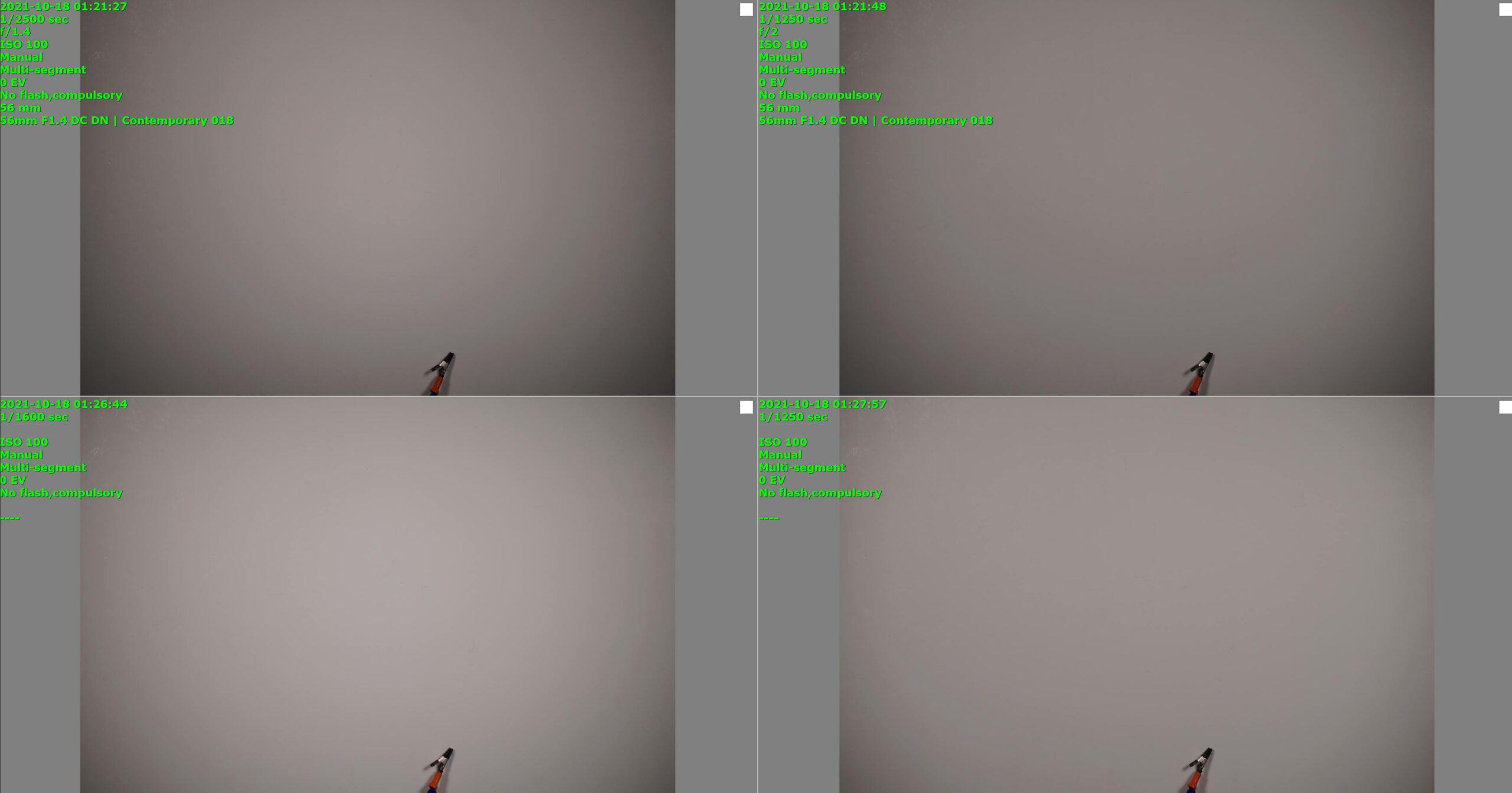 In comparison, the Sigma has very prominent darkening in the corners which is visible even at f/2.8.
In comparison, the Sigma has very prominent darkening in the corners which is visible even at f/2.8.
Vignette test comparison: Top left (Sigma f/2.8), top right (Sigma f/4); Bottom left (Viltrox T.2.8), bottom right (Viltrox T4)
Barrel distortion
The Viltrox seems to have fairly minimal pincushion distortion (when the auto-correction on the camera is turned off). Our Sigma 56mm on the other hand has some really heavy pincushion going on.
Barrel distoration: left – sigma; right – Viltrox
Bokeh
Looking at the bokeh of the lens compared to the Sigma we would say that both lenses are very similar wide open. Closing down you start seeing the difference made by the extra aperture blades.
Bokeh demo: Top left (Sigma f/1.4), top right (Sigma f/2); Bottom left (Viltrox T.1.5), bottom right (Viltrox T2)
Bokeh demo: Top left (Sigma f/2.8), top right (Sigma f/4); Bottom left (Viltrox T.2.8), bottom right (Viltrox T4)
We can’t really say if this look is more pleasing, and this is certainly not a stills lens, but at T/8 you can see some really lovely Sunstars with the lens.
Sunstars at T8 with the Viltrox 56mm
Conclusion
The Viltrox 56mm Cine is the first lens that we have reviewed here from the Chinese brand and it is definitely interesting. It is very well built, easy to use with just the right focus throw. It has low (pincushion) distortion, fairly low breathing, and a decent Bokeh.
All around for the price, it is a decent option for those looking for a compact well-built Cine lens for APS-C, and if you are OK with a little vignette, even on a FF especially when using a bit of clear image zoom.
Advantages and disadvantages – Viltrox and Sigma 56mm
The lens isn’t without its drawbacks of course. It is certainly not as sharp as the fantastic Sigma 56mm f/1.4 stills lens, especially not in the corners, it suffers from quite a bit of flare against bright light sources, but more than anything it has a lot of CA up until T/2.8.
With that said, if you are mostly going to use it at that aperture or above it is certainly recommended for its price range.
Pricing
Talking about pricing, the lens is available now for a price of $415. The stills version with AF sells for $280. If you happen to be interested in the Sigma 56mm f/1.4 – it currently sells for under $400.
You can check out more LensVid exclusive articles and reviews on the following link.

You can support LensVid by shopping with our affiliate partners
Affiliates: Amazon, B&H, Adorama and E-bay.
Why should you trust us?